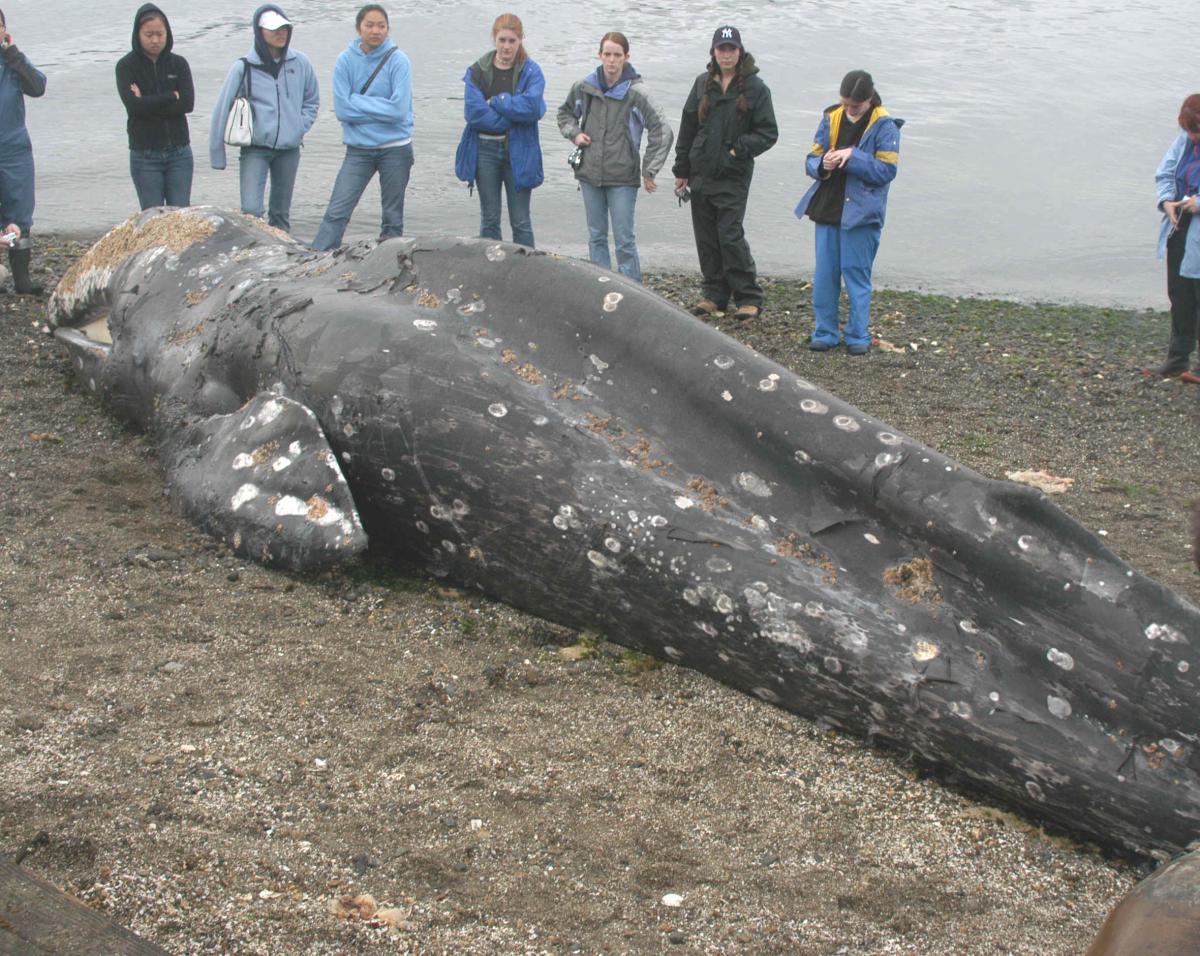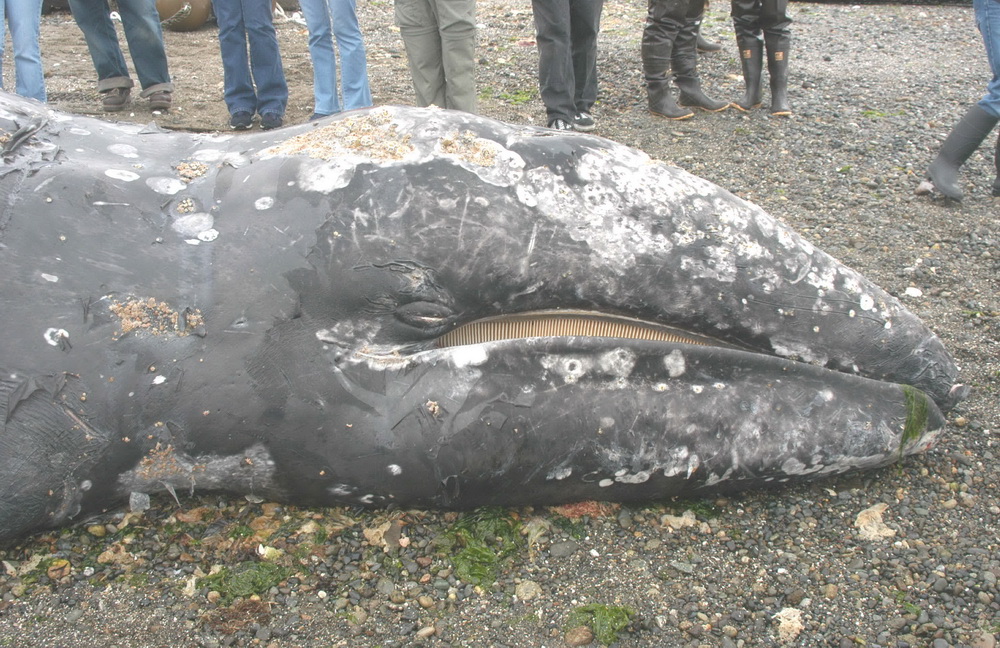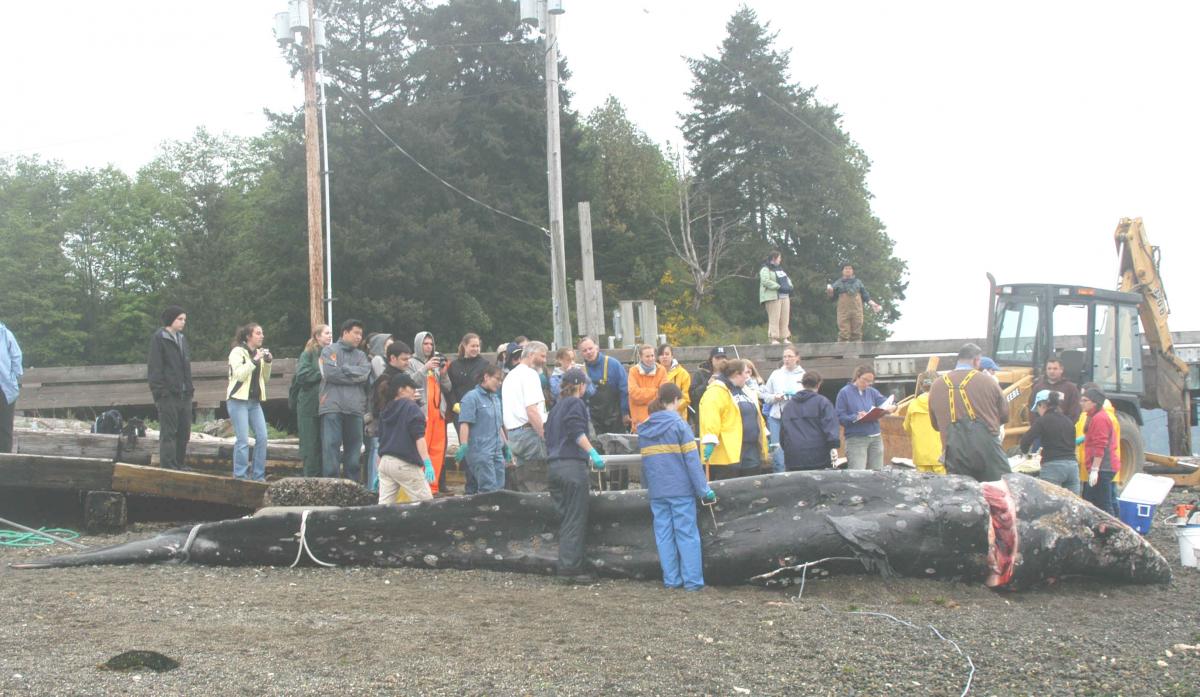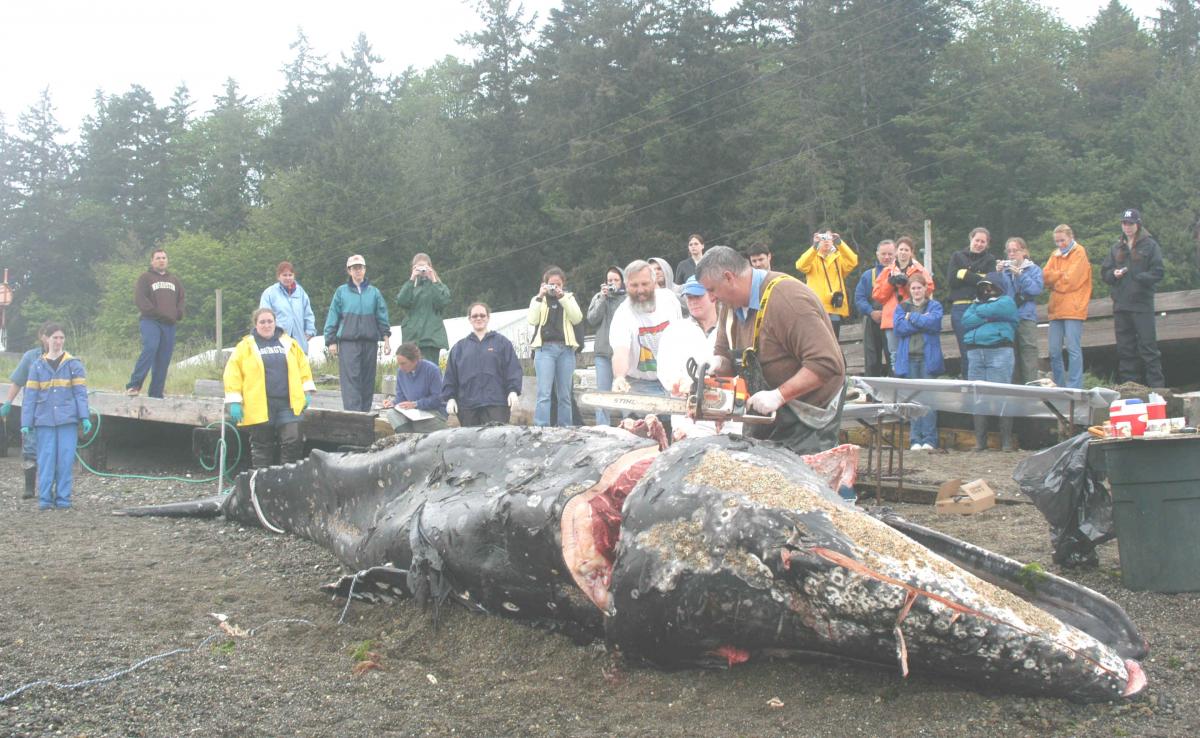The gray whale stranded and died at the Kitsap Naval Base in Bremerton in the early morning hours of 4 May 2005 was a 30’ juvenile female that appeared to have died from starvation. An extensive examination of the animal was conducted on the morning of 5 May 2005 by biologists and veterinarians with Cascadia Research, National Marine Fisheries Service, and the British Columbia Ministry of Agriculture and Food, all of which are members of the Northwest Marine Mammal Stranding Network. Washington Department of Fish and Wildlife personnel had conducted the initial response and worked with the team on relocating and examining the animal. A University of Washington Marine Mammal Biology class also attended the necropsy.
The examination took just over 4 hours and occurred just over 24 hours after the animal had died and unlike many strandings in past years that allowed a very thorough examination and collection of tissues. The animal swam into the Navy shipyard late in the evening on the 3rd of May reaching the spot where it died at about 11:40 PM. It died sometime shortly after that. The animal was towed to the examination location on the afternoon of 4 May. The U.S. Navy and the port operations at Naval Base Kitsap were extremely helpful in providing the people and resources to rapidly move the animal, the U.S. EPA allowed use of their property for the exam, and National Marine Fisheries Services provided valuable support, all allowing the ability conduct the necropsy so quickly.
The whale was a 8.90m (30 feet) female gray whale that likely weighed about 13,000 pounds. This is slightly larger than the two other stranded gray whales in recent weeks although this animal was still a juvenile that was most likely just over 2 years old. This is the third stranding of a gray whale in Washington State in recent weeks. All three have been young emaciated animals estimated to be 1-2 years old. The first stranding was at Whidbey Island on 18 April and the second was at Grayland on the Washington outer coast on 26 April.
There were some external but superficial cuts and scratches on the side of the whale consistent with injuries from where it became stranded, none of these were serious enough to cause death. Additional tests will be conducted in coming weeks on tissues collected which may provide some indication of why the animal starved. Even though both the animals that previous stranded had starved, the Grayland animal showed some scarring indicative of possible entanglement in the past and the Whidbey whale showed evidence of blunt-force trauma from something like a strike from a vessel.
The three strandings to date do not yet exceed the annual average number of gray whales that have been found dead in Washington. Every year from 1 to 28 gray whales wash up dead in Washington State. The average has typically been about four a year. A major mortality event occurred in 1999 and 2000 resulting in more that 20 strandings each year in Washington and 100s of other whales found dead along the range of the gray whale from Mexico to Alaska. Many of these animals were emaciated. The gray whale population had been recovering from commercial whaling and had increased to over 20,000 animals by the late 1990s. The mortality event in 1999 and 2000 reduced that population down to an estimated 17,000. Since 2000, mortality has been low.
Natural markings on the Bremerton whale did not match with any of the gray whales sighted alive and photographed by Cascadia Research in recent months in Puget Sound. In the last month about 10-12 gray whales have been sighted in Puget Sound waters. This includes 5-7 gray whales in the Whidbey Island area and another 3-5 at other locations in southern and central Puget Sound. Many of the sightings have been of animals in unusual areas for gray whales including near Shelton, Olympia, Bremerton, and Seattle. In past years, high numbers of sightings in these types of areas have been followed by higher than normal numbers of strandings. This may reflect that some animals at the end of about 4 months of fasting, may be running out of their reserves and be searching for food in areas they are not familiar with.
For additional information contact: John Calambokidis, Cascadia Research (360) 943-7325.



